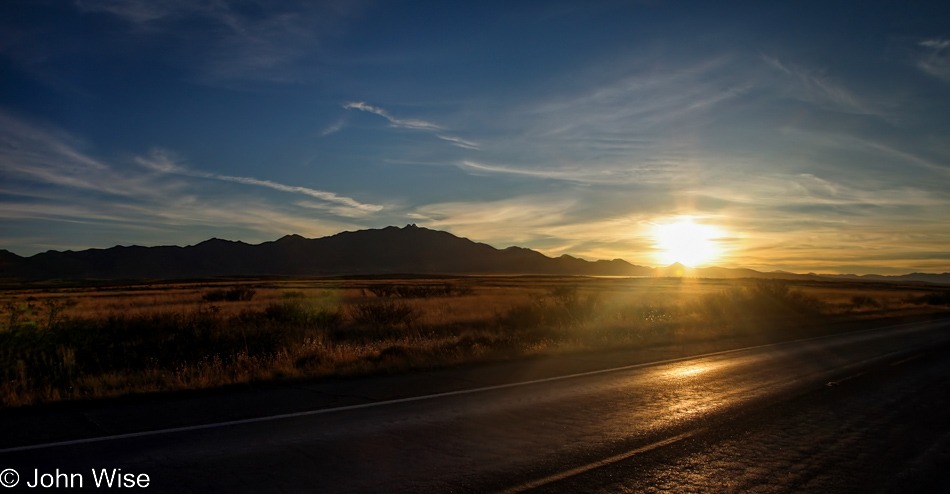
It is 6:50 in the morning, and the sun is rising over the Dos Cabezas mountains near Willcox, Arizona. Last night, we drove 200 miles southeast of Phoenix for a weekend of visiting ghost towns and, more importantly, picking apples at Brown’s Orchard. Our cheap $35-a-night motel in Willcox is a Patel operation with the familiar Gujarati cooking smell taking over the reception area; Bollywood music plays in the background. It is cold down here, a surprise to my legs covered to the knee by my all-too-thin shorts. A polo shirt and no sweater doesn’t help this situation. Fortunately, I brought socks and hiking boots.

We’re out on this frosty morning for a drive south to check out some old ghost towns and whatever abandoned stuff we can find.

First up is Webb, originally a railroad stop for local agriculture. An old school building, now a residence, and a collapsed dwelling are all we find; an old post office is supposed to exist, but we don’t see it.
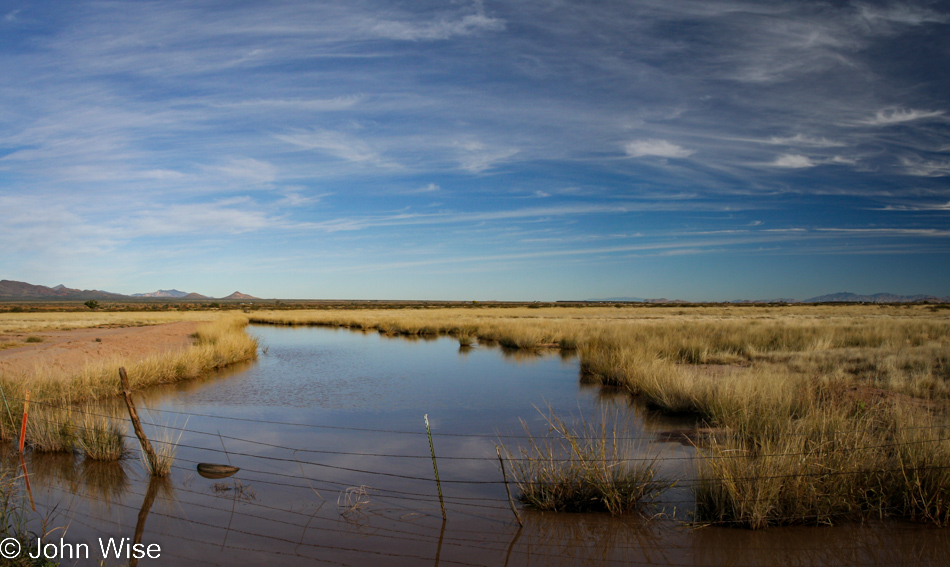
And so we continue down dirt roads, looking for Gleeson and the Arizona Ghost Town Trail.

We’ve come across Gleeson and the Joe Bono Mercantile and Bar. This old building was a general store until the 1950s, and then, after Joe Bono took it over, it was a bar that remained open until the 1970s. Apparently, it was the last operational business in town.
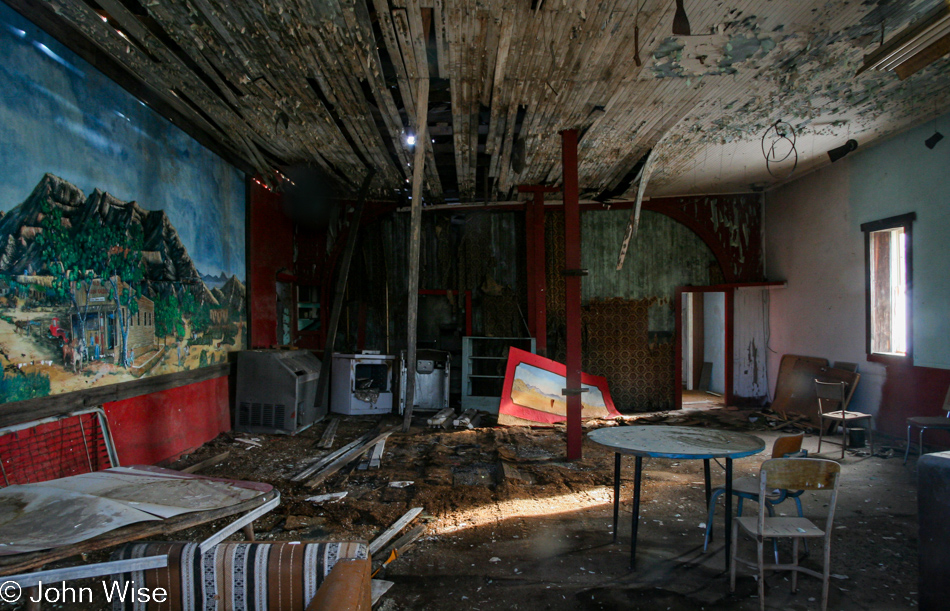
Through the dirty window, this was what my camera could make out of the decaying old place.
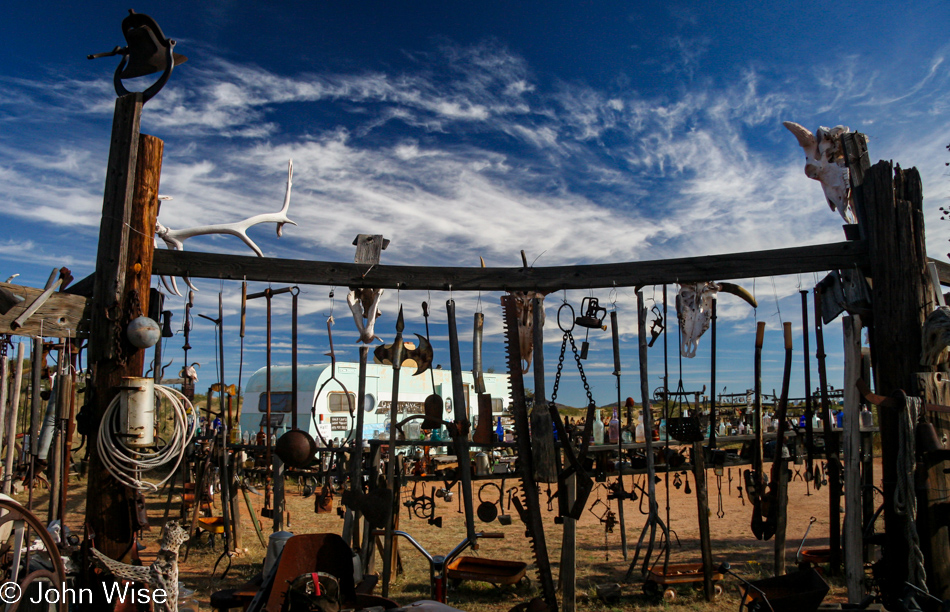
This is our second visit to Gleeson; the first time was six years ago with my mother-in-law when we stopped here at the world-famous Rattlesnake Ranch.
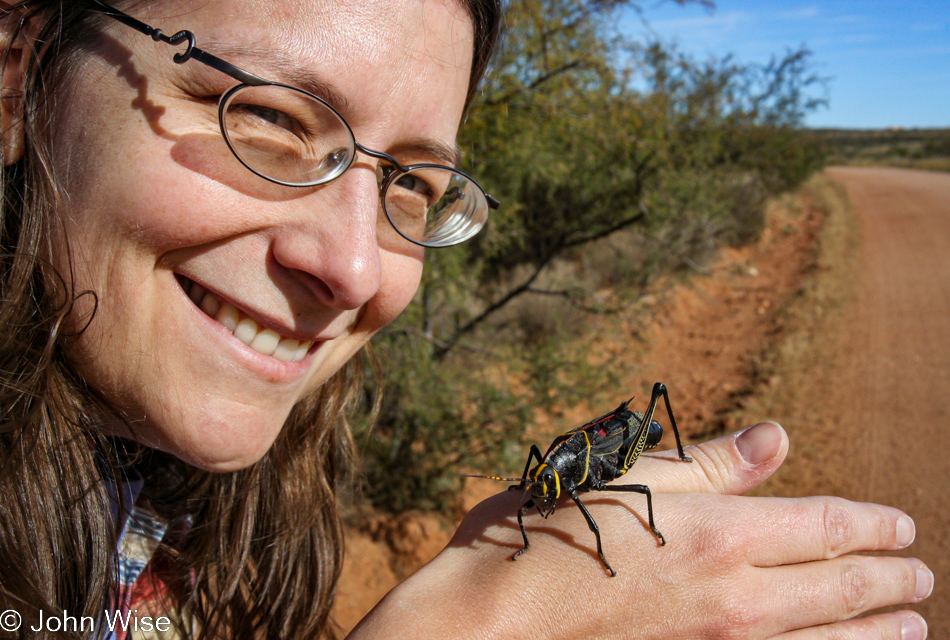
After a moment of backtracking we head north on the Ghost Town Trail but first a stop to inspect a giant black grasshopper that appears to be of the “Lubber” family.
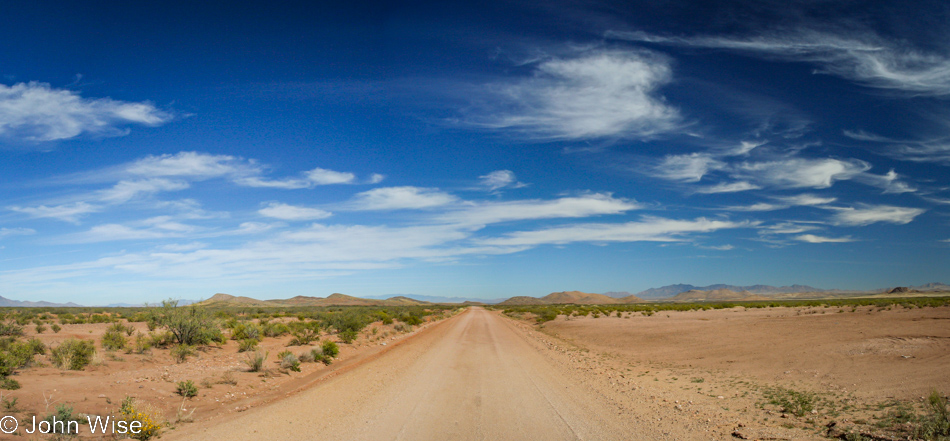
This dirt road with a fair amount of washboarding is taken easily in our little Hyundai Accent – in other words, any car can make this road. In Courtland, a few remains of buildings crumble away, rejoining the earth they were formed with. The jail building is holding up the best; a nearby sidewalk comes from nothing and goes nowhere, and a few foundations hint at storefronts that may have at another time opened their doors to patrons strolling by.
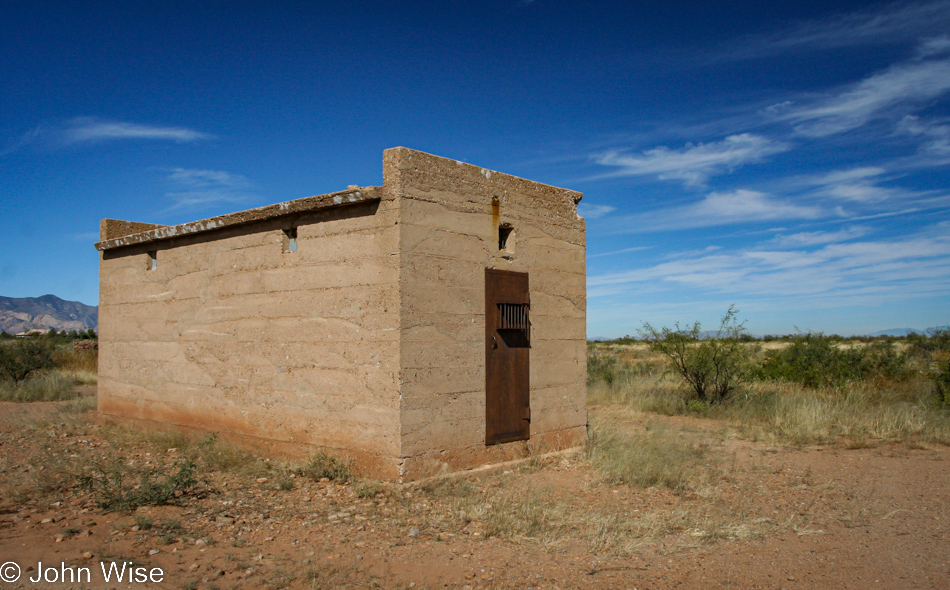
Pearce is at the end of the trail near the highway and, as ghost towns go, this one is doing ok. This old jail, built in 1915 for only $615, was abandoned in the mid-1930s.
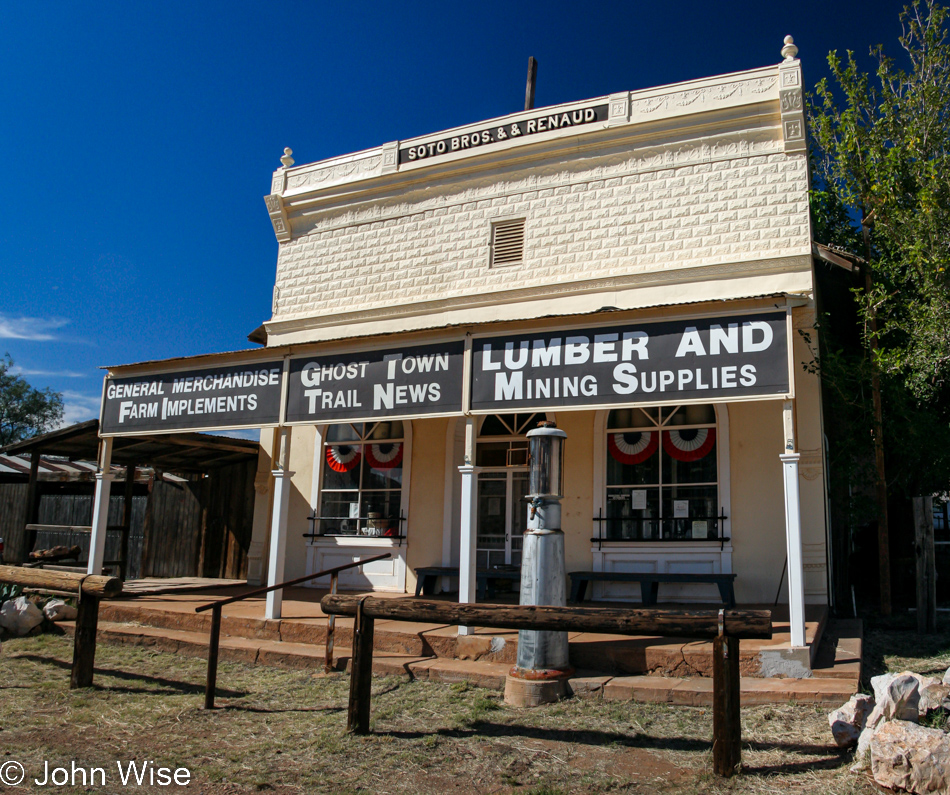
This particular weekend locals near the ghost town of Pearce have come out and set up stands roadside for a community yard sale. We stopped and found little of use, but the walk up and down the street was well worth our time. This is the Soto Bros. and Renaud Store, a.k.a. the Pearce General Store, built in 1896 that served the local population of the town of 1,500 until the place started to decline during the Great Depression. It is mid-morning, and time to get to the main reason we have made this journey.
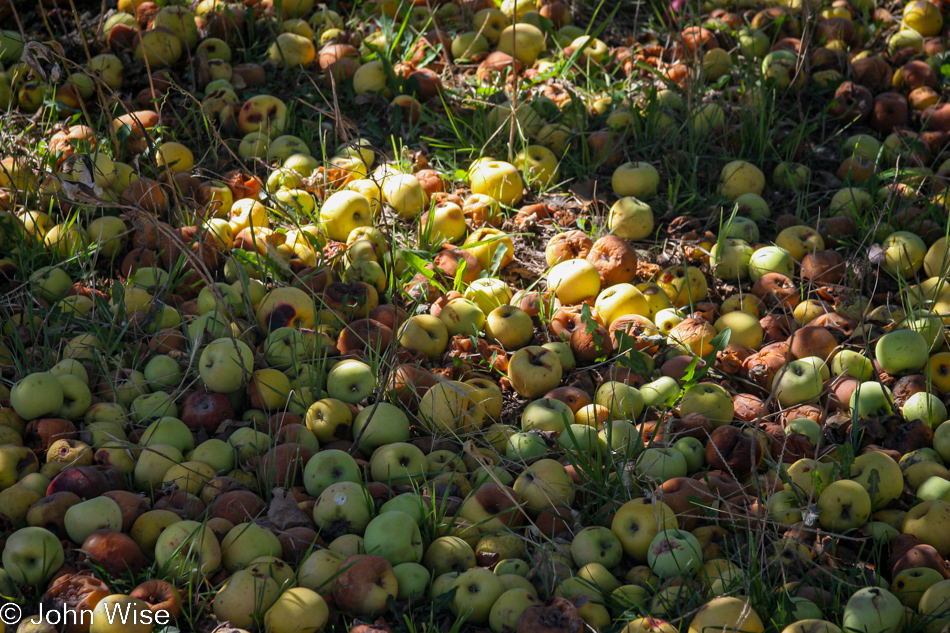
We are going apple picking. Last year, I stumbled upon a website telling of the opportunity to pick your own apples and have them made into apple juice while you wait. The only problem was that when I called for more information, I found that it was too late in the season to come out. This year, Brown’s Orchard proprietor June called to let me know that the apples were in, and we finally arrived on the last apple-picking weekend.
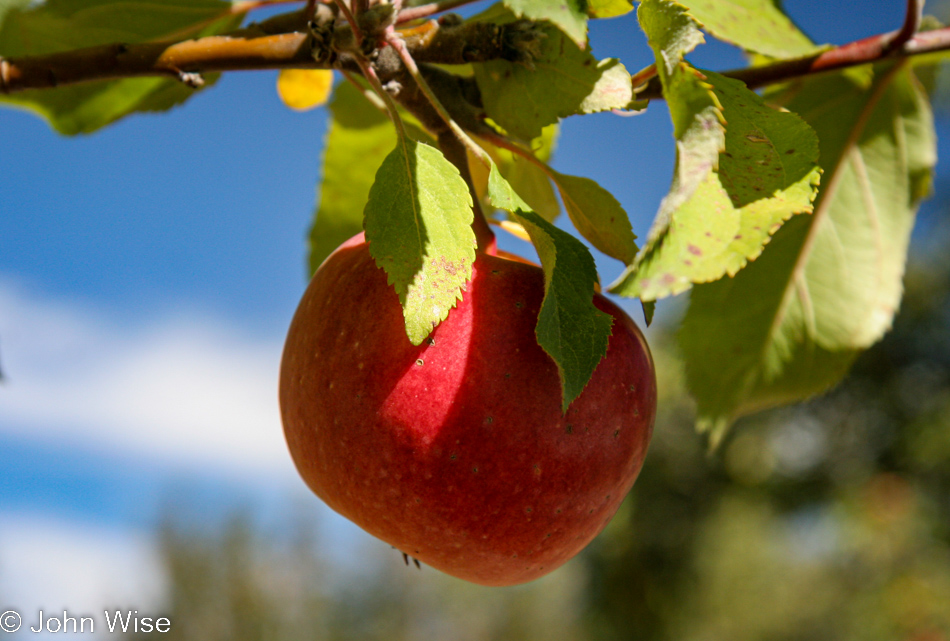
With a wagon in tow, armed with fruit pickers to collect the 160 pounds (72kg) of apples we need to do our very own cider pressing. Caroline and I scour 36 acres of apple trees, hundreds of trees, in fact. We pick from Red and Golden Delicious, Red Rome Beauties, Jonathans, and our favorite – the Winesap.
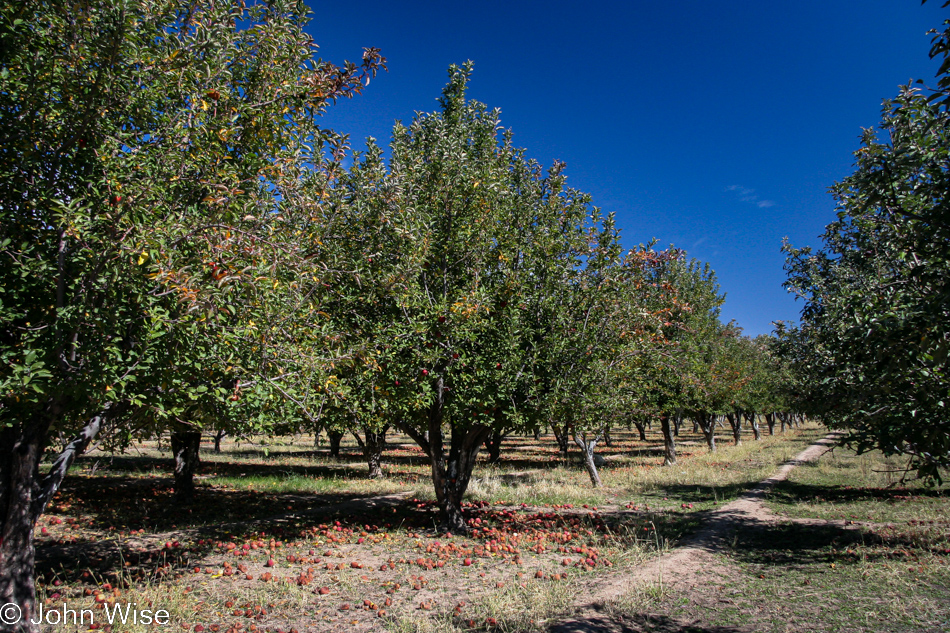
The trees are beautiful this time of year with leaves turning fall colors. The ground is covered with fallen apples that a flock of sheep is munching on while two dogs watch on. The aroma is of sweet apples and fragrant vinegar as the apples on the ground have seen better days.

Finally, I struggle to drag our laden wagon with a flat tire back to the barn. Wasting no time, Gerard, June’s husband, got us to washing apples. Once cleaned, the apples are tossed into a grinder, filling a bucket that, in turn, is dumped into the press. By the time all the apples have been prepared, and it is time to start the pressing mechanism, 3 gallons (11.5 liters) of juice have naturally flowed from the apple mash already. Another 9.5 gallons are pressed from our hand-picked apples using the press.
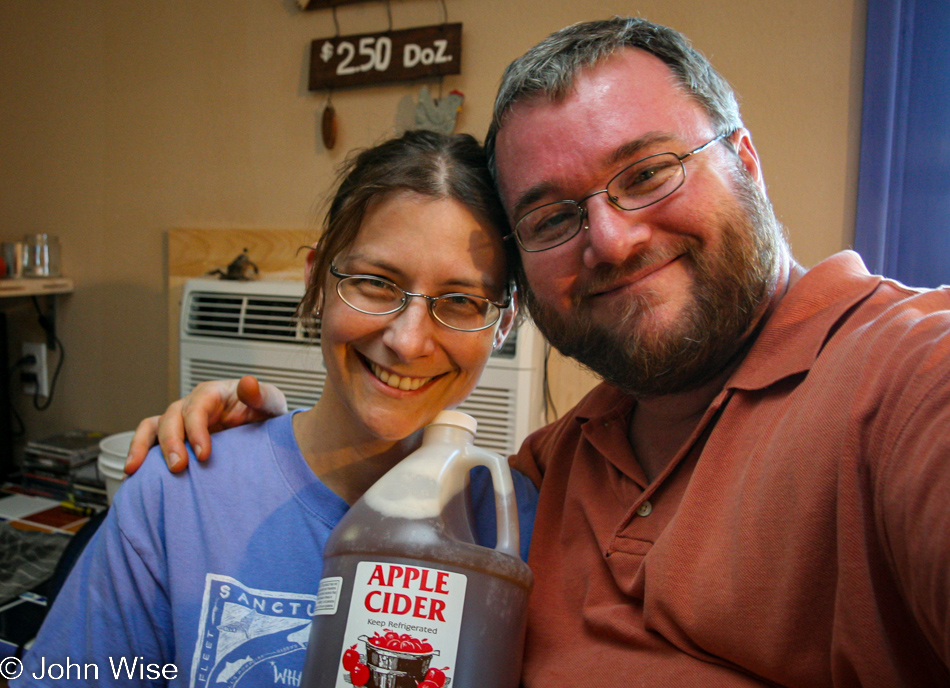
As the juice flows, Gerard gives us a sample glass at first, I am aghast to drink anything made of apples since, in the orchard, Caroline and I must have eaten and sampled more than 20 apples each, but the juice is amazing, and so we sample, sample and sample some more. We have been ankle-deep in apples, picked and ate apples, washed, ground, squeezed, drank, wore apples, and would love to do it all over again.
So today I will thaw another gallon of the cider.